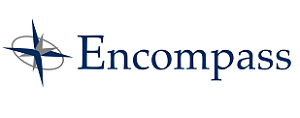College Savings 101: Preparing for Higher Education Costs
College education is becoming increasingly expensive, and families are feeling the financial strain. Whether you're saving for a toddler or a teen, understanding how to save for college early can ease future financial stress. At Encompass Credit Union, we believe college financial planning begins with smart savings habits—backed by tools built for Hoosiers. In this guide, we'll walk you through the higher education tuition landscape and discuss strategies to help you grow your college fund with confidence.
Understanding the Cost of College
Public universities, such as Indiana University–Bloomington, average around $28,000/year (in-state tuition and fees, 2024), while private schools can exceed $45,000/year. However, tuition is just part of the picture—add room & board, books, transportation, and personal expenses, and the actual annual cost tends to be around $35,000–$50,000. And inflation means these numbers rise yearly. That’s why early college financial planning is essential—so your savings grow alongside the costs.
How Encompass Can Help With College Costs
Regular & Ultra Savings Accounts
Use the Encompass Savings Accounts page to choose from Regular or Ultra Savings options, all offering competitive APYs and daily compounded interest.
Certificates of Deposit (CDs)
Lock in higher fixed rates for 6–60 month terms—great for medium-term saving goals.
Coverdell Education Savings Account (ESA)
Tax-advantaged, allowing up to $2,000/year per child, earmarked for K–12 and college costs.
How to Save for College: Best Practices
Automate deposits into savings or ESA—make it routine.
Open multiple buckets using Club/Special Savings Accounts for targeted goals, such as preparation and tuition.
Ladder CDs to match expense timelines and lock in better APYs.
Use the Simple Savings Calculator on Encompass to forecast growth based on contribution and rate.
Encourage family members to help fund: gift contributions, ESA funding, or 529 boosting.
Revisit and adjust your plan annually to reflect the rising costs of college.
College Financial Planning Beyond Savings
Explore federal and state aid (Pell Grants, 21st Century Scholars).
Understand how savings affect financial aid eligibility.
Consider Coverdell ESAs as a flexible complement to 529 plans, especially for private K–12 tuition.
FAQ Section
Q1: How much should I save for college?
Estimate total cost (tuition + expenses × years). Aim to cover at least half via savings and supplement with aid/loans.
Q2: What if I start later?
No problem—opt for CDs, high-yield savings, and max out ESAs or 529 inflows ASAP.
Q3: Are ESA or CD withdrawals penalized?
ESA withdrawals for qualified expenses are tax-free; non-qualified withdrawals incur penalties. CDs may have penalties for early withdrawal.
Q4: Can Encompass assist me in making a choice?
Yes! Visit our Savings Accounts page or contact us to connect with an advisor.
How to Join Encompass Credit Union
Becoming a member is quick and easy. Any person who lives, works, attends school, or worships in Tipton, Clinton, or Howard County, Indiana, is eligible to join. Spouses, children, and parents of eligible persons are also eligible. In addition, any business or organization in Tipton, Clinton, or Howard County, Indiana, is eligible for membership. If you are eligible for a business membership, your employees will also be eligible. Once you join, you can enjoy the benefits of membership even if you move away.
Taking the First Step
Start today—even a $25/month deposit grows over time. Open a Regular Savings Account (with a minimum deposit of just $5) through Encompass. From there, layer in Club Accounts, ESAs, or laddered CDs. Use our Simple Savings Calculator to visualize growth. Reach out via our Contact Us page for personalized guidance. Combined with Indiana’s tax incentives, a clear college savings plan can significantly reduce future financial stress.
